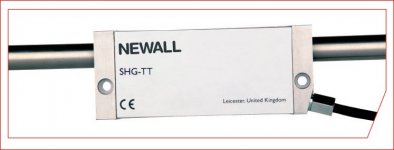Porschefix
Hot Rolled
- Joined
- Dec 3, 2009
- Location
- Bluff Dale
This is a tale of my experience with my NEWALL DP900 DRO. I did a lot of research 4 years ago to find the right DRO for my manual mill. Two features I really wanted were-
Arc contouring- Input x-y center coordinates, tool diameter, radius and step size, inside or outside and with an endmill a person can (rough) cut a full or partial arc.
Arc or circle center locator- using a probe to touch off on three points of any arc or circle (x-y), even just a small portion of an arc, locate the center of that arc or circle and the radius. The part can be concave or convex, in other words you can touch off either inside or outside of an arc.
I use these features together to link(Blend) radii together and for many other purposes. The problem arose shortly after I installed and started using my new DP 900 DRO. While the arc contouring function worked perfectly for most of my needs I discovered that using it for radii and contours under .200” there was a problem. After inputting specific parameters I noticed that the display would not properly render a small radius, which means you can't use it for small arcs. Being really busy at the time I put it off for later discovery. A couple of months ago I made it a priority to research the problem and came to the conclusion that there was a problem with the software. I called Newall and they verified that there IS a problem with the software. I still have one year left on my warrantee however since Newall for whatever reason does not have a relationship with the partner who helped to develop this product anymore they are unable to repair the software for the DP 900. They generously offered to warrantee replace the DP 900 with their newest DP 1200. I thought that was appropriate and started to research the specs on the DP 1200. The problem I immediately ran into is that the DP 1200 does not have the arc, circle center locator function although it does have the arc contouring. They said that they did not include this feature because not very many people used it. Whatever.
I thought of going ahead and warrantee replacing my DP900 with the new DP 1200 head and selling it on eBay, then buying an Acurite Head but my spherosyn and microsyn encoders are not compatible with anything but the Newall DRO’s. Replacing the entire system with an Acurite or Heidenhain DRO system (both have these features) would cost a lot.
This leaves me up a creek without a paddle. There is no solution for this problem and I feel like Newall has let me down. Other than this problem I am satisfied with the DP 900. Going with the new DP 1200 would not be a resolution to the problems I’m having so I’ve decided (barring a better solution) to simply keep the DP 900 and live with its limitations.
Any suggestions?
Thanks,
Ron
Arc contouring- Input x-y center coordinates, tool diameter, radius and step size, inside or outside and with an endmill a person can (rough) cut a full or partial arc.
Arc or circle center locator- using a probe to touch off on three points of any arc or circle (x-y), even just a small portion of an arc, locate the center of that arc or circle and the radius. The part can be concave or convex, in other words you can touch off either inside or outside of an arc.
I use these features together to link(Blend) radii together and for many other purposes. The problem arose shortly after I installed and started using my new DP 900 DRO. While the arc contouring function worked perfectly for most of my needs I discovered that using it for radii and contours under .200” there was a problem. After inputting specific parameters I noticed that the display would not properly render a small radius, which means you can't use it for small arcs. Being really busy at the time I put it off for later discovery. A couple of months ago I made it a priority to research the problem and came to the conclusion that there was a problem with the software. I called Newall and they verified that there IS a problem with the software. I still have one year left on my warrantee however since Newall for whatever reason does not have a relationship with the partner who helped to develop this product anymore they are unable to repair the software for the DP 900. They generously offered to warrantee replace the DP 900 with their newest DP 1200. I thought that was appropriate and started to research the specs on the DP 1200. The problem I immediately ran into is that the DP 1200 does not have the arc, circle center locator function although it does have the arc contouring. They said that they did not include this feature because not very many people used it. Whatever.
I thought of going ahead and warrantee replacing my DP900 with the new DP 1200 head and selling it on eBay, then buying an Acurite Head but my spherosyn and microsyn encoders are not compatible with anything but the Newall DRO’s. Replacing the entire system with an Acurite or Heidenhain DRO system (both have these features) would cost a lot.
This leaves me up a creek without a paddle. There is no solution for this problem and I feel like Newall has let me down. Other than this problem I am satisfied with the DP 900. Going with the new DP 1200 would not be a resolution to the problems I’m having so I’ve decided (barring a better solution) to simply keep the DP 900 and live with its limitations.
Any suggestions?
Thanks,
Ron
Last edited:



